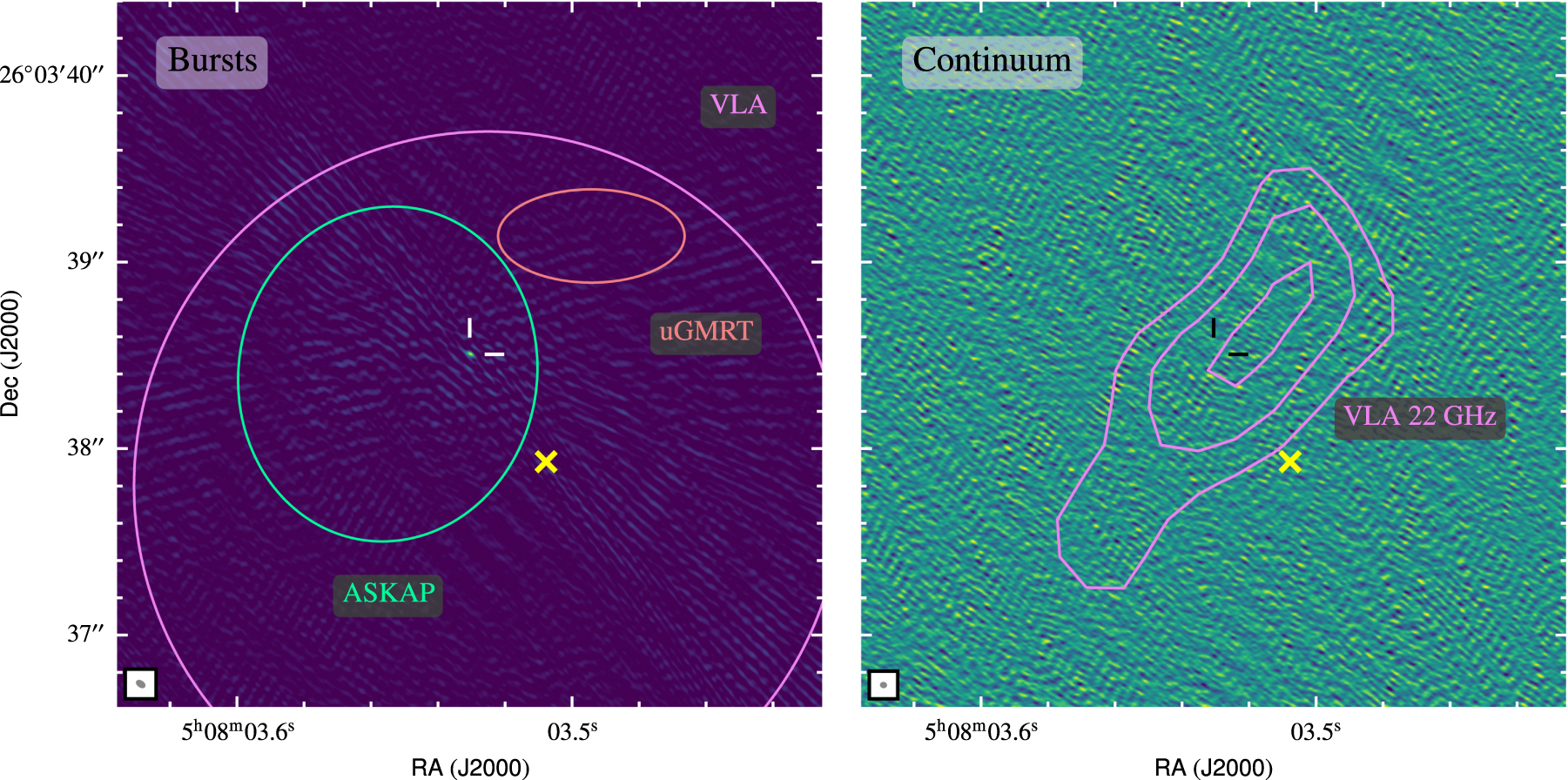 March 28, 2022
March 28, 2022
Very long baseline interferometric (VLBI) localizations of repeating fast radio bursts (FRBs) have demonstrated a diversity of local environments: from nearby star-forming regions to globular clusters. Here we report the VLBI localization of FRB 20201124A using an ad hoc array of dishes that also participate in the European VLBI Network (EVN). In our campaign, we detected 18 bursts from FRB 20201124A at two separate epochs. By combining the visibilities from both epochs, we were able to localize FRB 20201124A with a 1σ uncertainty of 2.7 mas. We use the relatively large burst sample to investigate astrometric accuracy and find that for ≳20 baselines (≳7 dishes) we can robustly reach milliarcsecond precision even using single-burst data sets. Subarcsecond precision is still possible for single bursts, even when only ~6 baselines (four dishes) are available. In such cases, the limited uv coverage for individual bursts results in very high side-lobe levels. Thus, in addition to the peak position from the dirty map, we also explore smoothing the structure in the dirty map by fitting Gaussian functions to the fringe pattern in order to constrain individual burst positions, which we find to be more reliable. Our VLBI work places FRB 20201124A 710 ± 30 mas (1σ uncertainty) from the optical center of the host galaxy, consistent with originating from within the recently discovered extended radio structure associated with star formation in the host galaxy. Future high-resolution optical observations, e.g., with Hubble Space Telescope, can determine the proximity of FRB 20201124A's position to nearby knots of star formation.
Nimmo, K., Hewitt, D. M., Hessels, J. W. T., et al. 2022, ApJL, Volume 927, Issue 1, id.L3, 12 pp.
